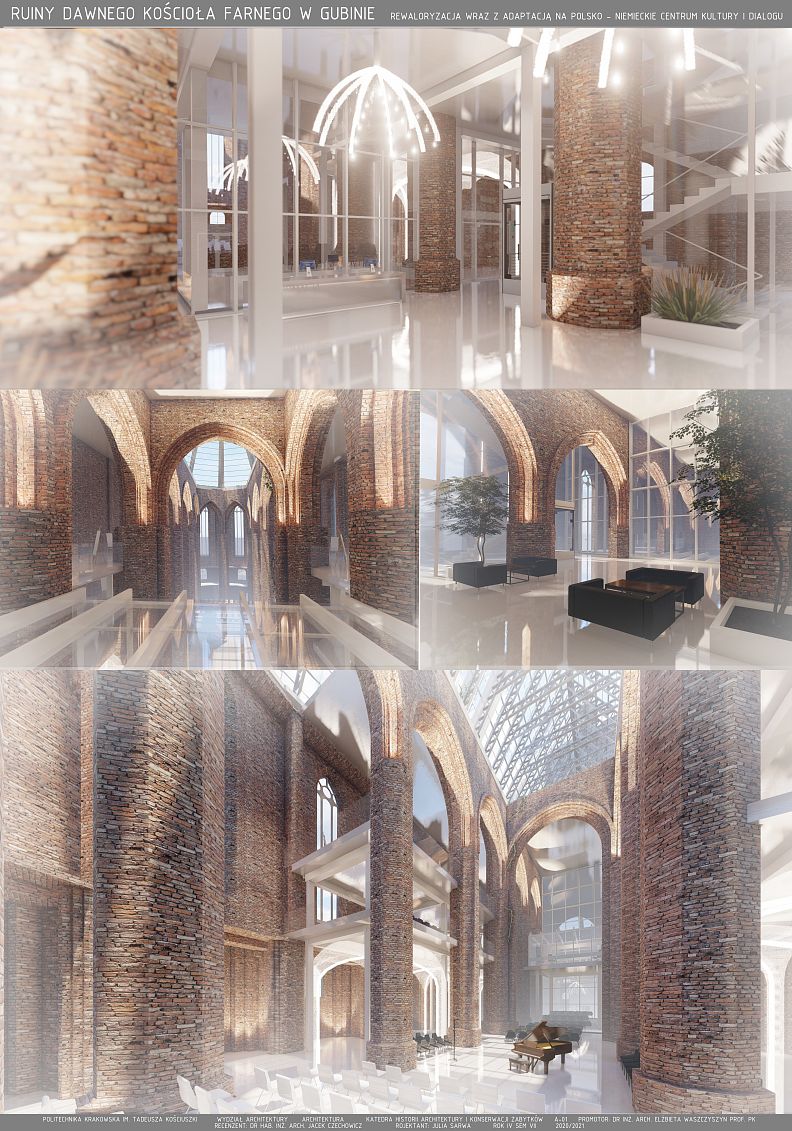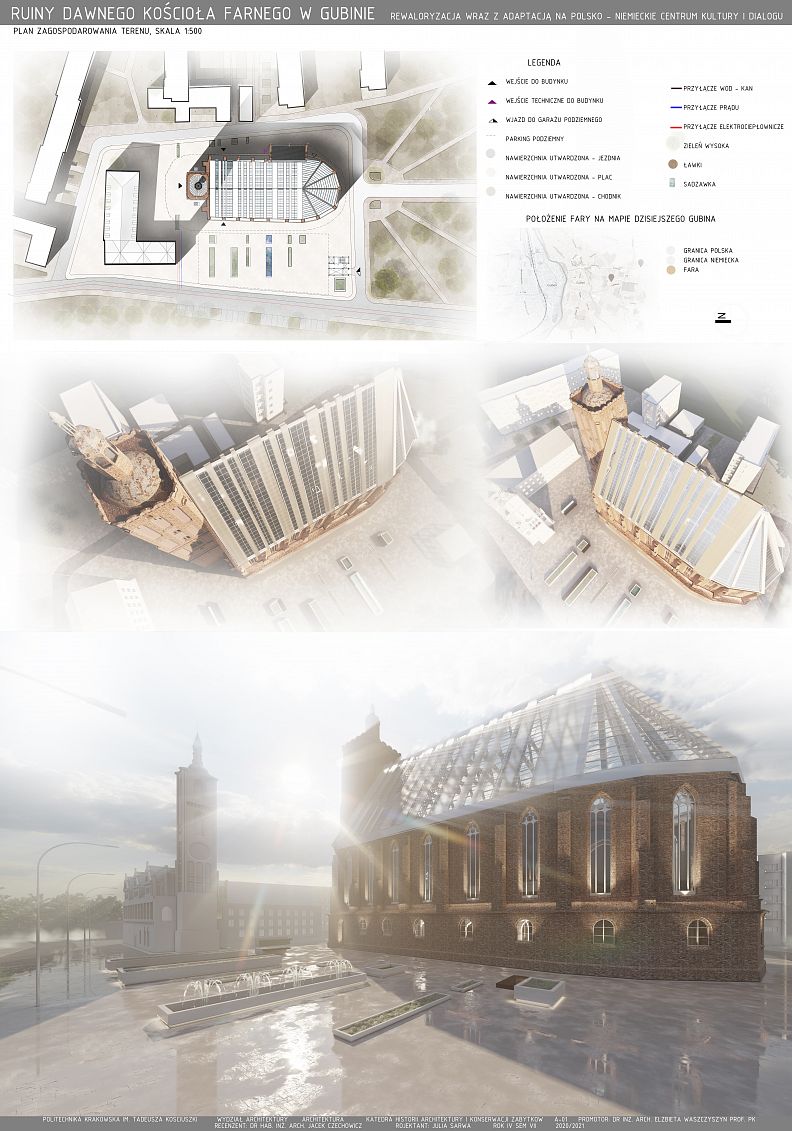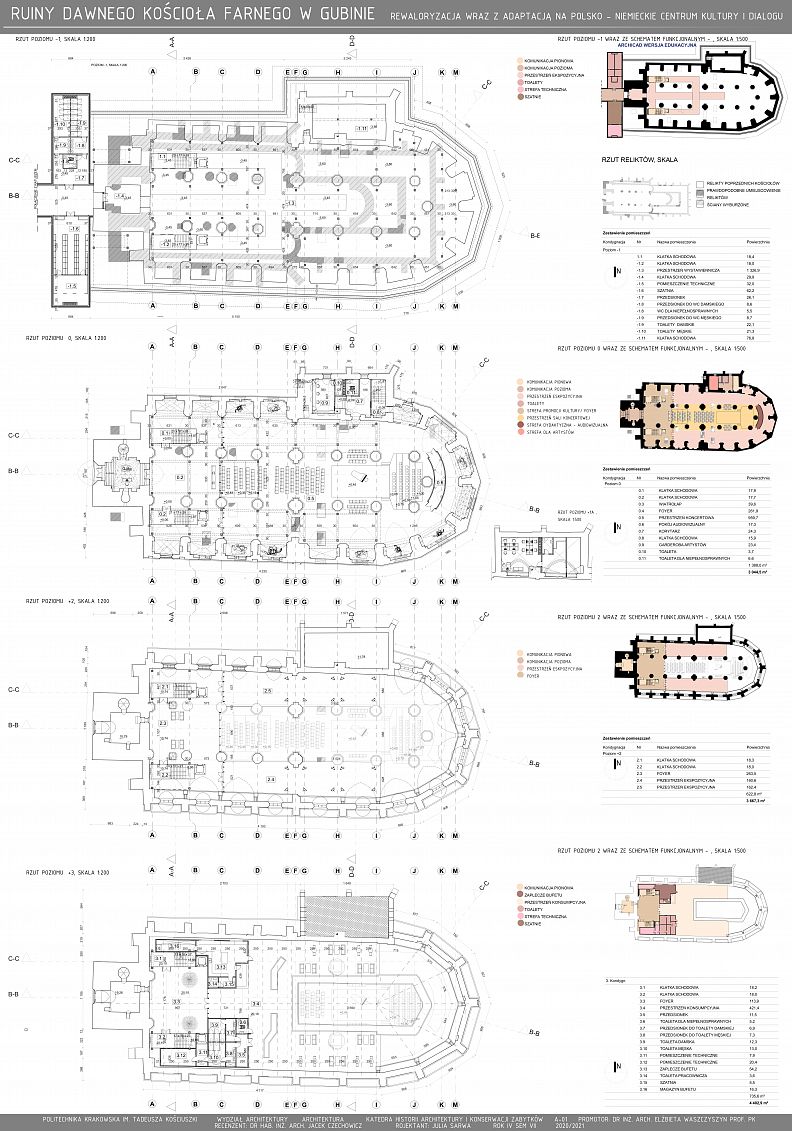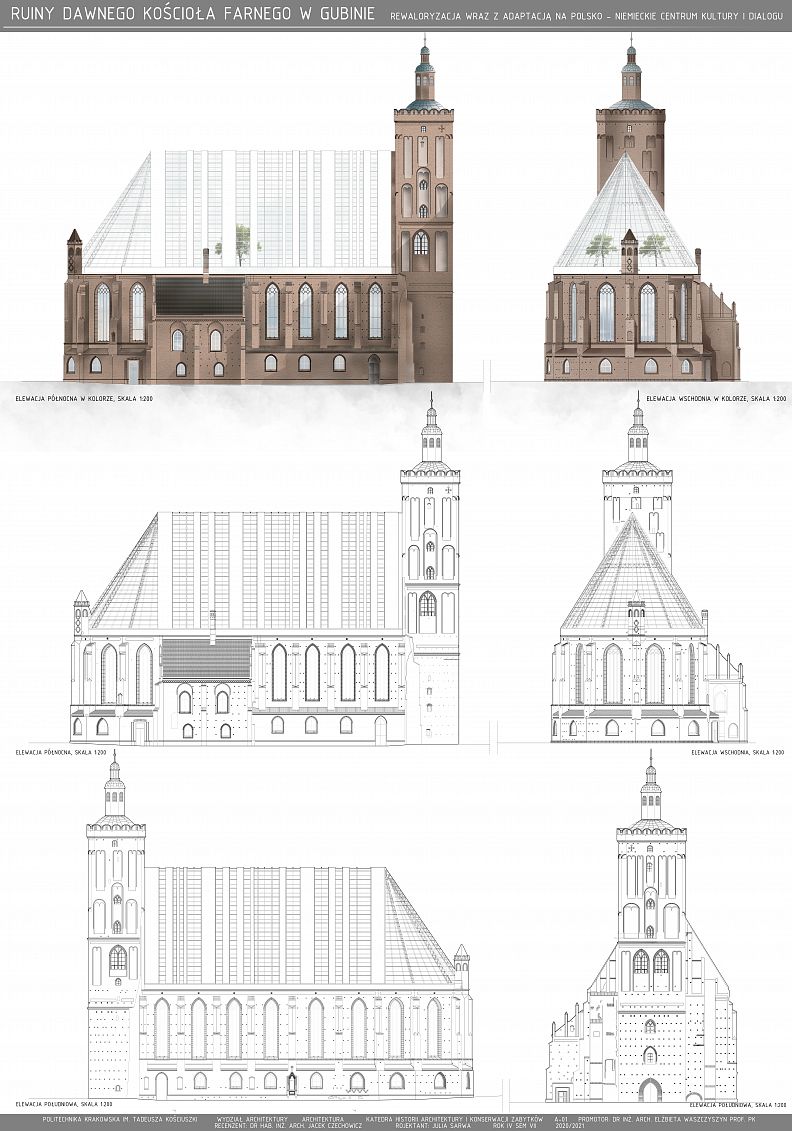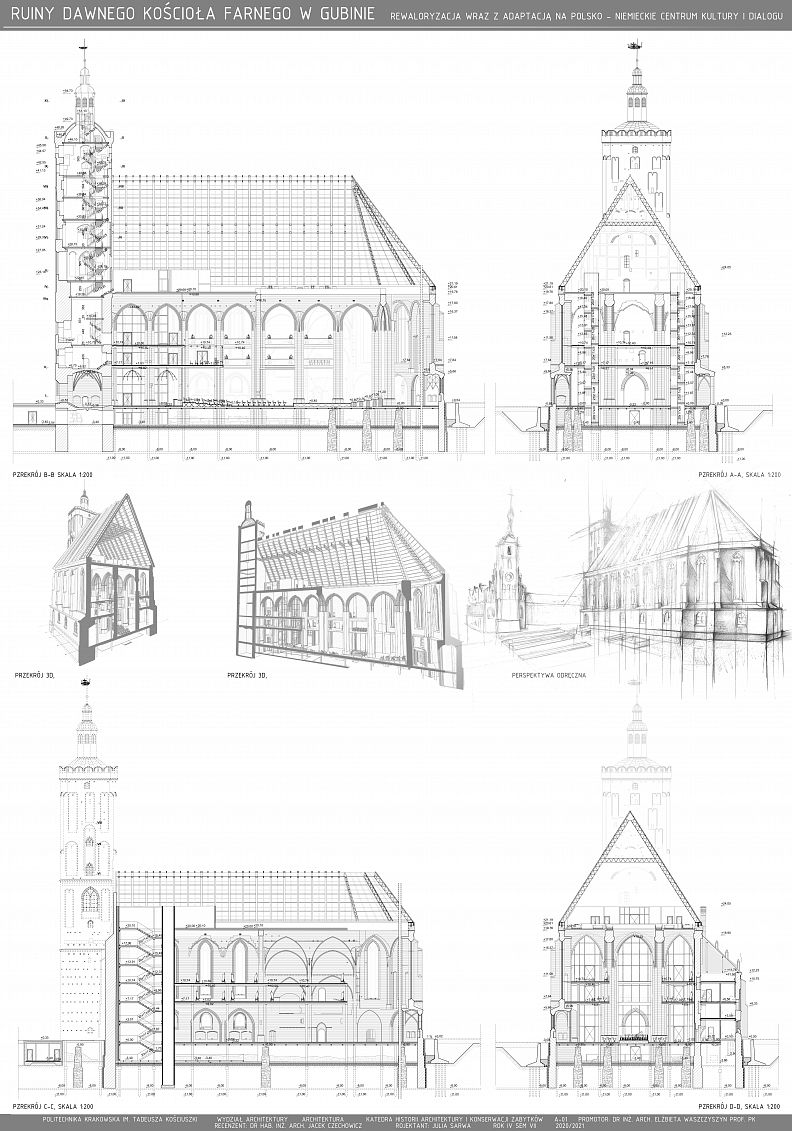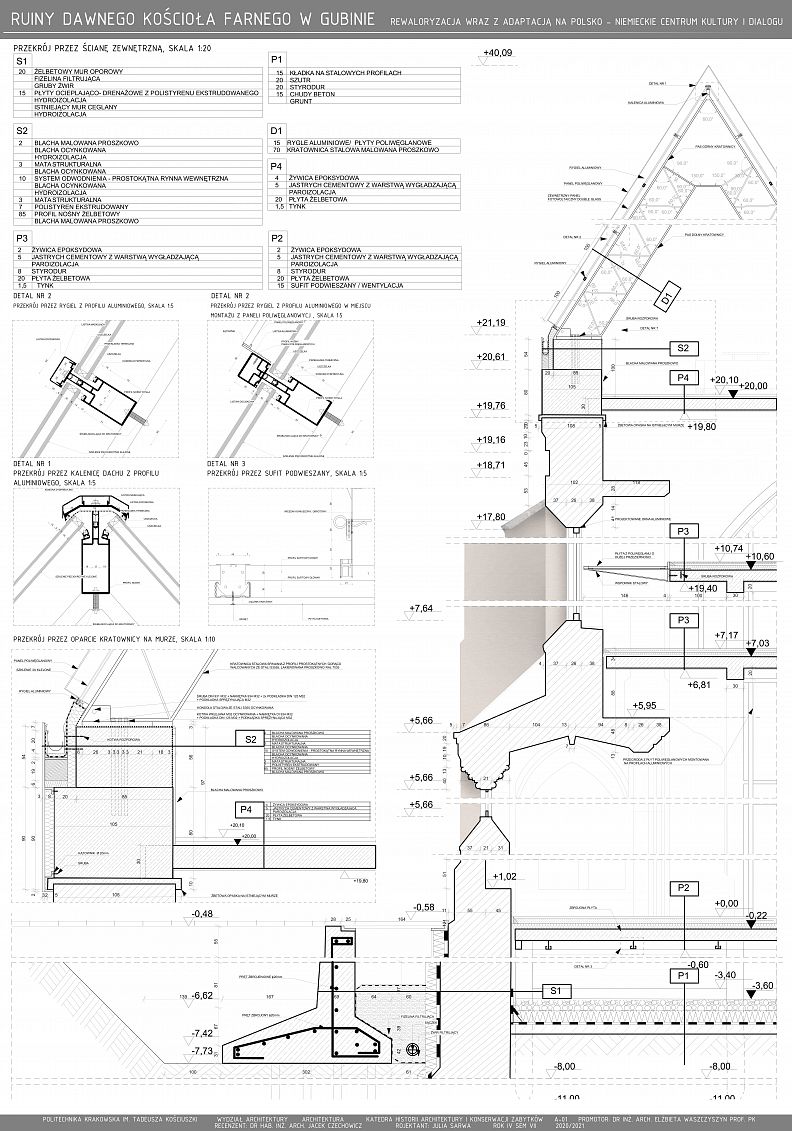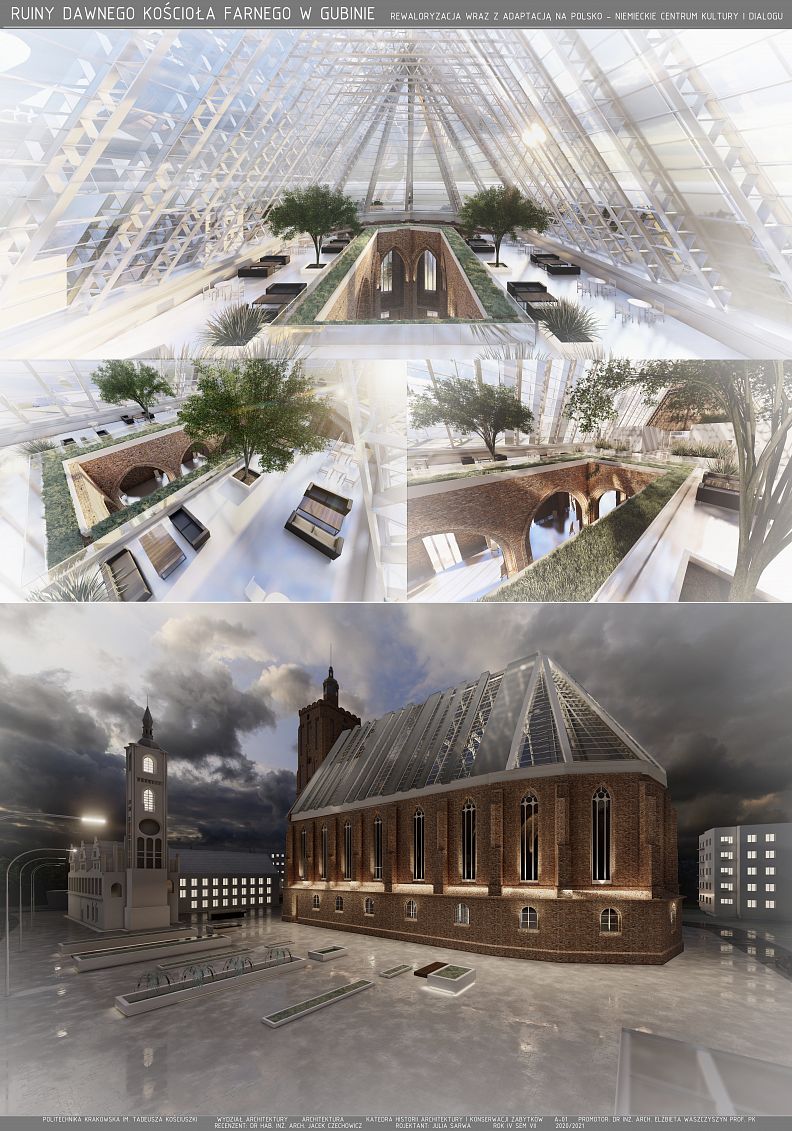RUINS OF THE PARISH CHURCH IN GUBIN - REVALORISATION AND ADAPTATION FOR THE POLISH - GERMAN CULTURAL AND DIALOGUE CENTRE

Project idea
The diploma thesis provides for the revitalisation and adaptation of the parish
building in Gubin to new utility functions for the Polish-German centre of culture and
dialogue. The parish building, which was destroyed in 1945, is falling into ruin every
single day. The project assumes preservation of the historic walls and placeing a
new structure in the historical framework .
Project description
The diploma thesis provides for the revitalisation and adaptation of the parish
building in Gubin to new utility functions for the Polish-German centre of culture and
dialogue. The parish building, which was destroyed in 1945, is falling into ruin every
single day. The project assumes preservation of the historic walls and placeing a
new structure in the historical framework . The biggest design challenge was
covering the roof of the building, as currently it does not have one , and the layout of
the structure, which was not easy due to the ruins of previous churches on level -1.
The roof, which shape resembles the original stricture, will be a particular feature of
the design, but its structure and the materials used for the construction will be
completely different - aluminum, glass and calcium polycarbonate with high
translucency. The building will be energy positive thanks to the use of photovoltaic
paint and a glass roof from which the generated heat will be exchanged in a special
room. The main element in the interior will bethe concert hall with a stage in the
former presbytery. Unfortunately, the process of destroying sacral buildings is
becoming more and more common and I am of the opinion that it the worst thing that
can happen to a building is to become derelict and unloved. Therefore, it is worth
trying to repurpose them in order to preserve them and give them a second life.
Technical information
The biggest design challenge was
covering the roof of the building, as currently it does not have one , and the layout of
the structure, which was not easy due to the ruins of previous churches on level -1.
The roof, which shape resembles the original stricture, will be a particular feature of
the design, but its structure and the materials used for the construction will be
completely different - aluminum, glass and calcium polycarbonate with high
translucency. The building will be energy positive thanks to the use of photovoltaic
paint and a glass roof from which the generated heat will be exchanged in a special
room. T
